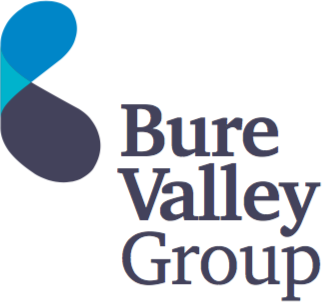Is your startup looking to grow and expand? The UK offers several schemes and mechanisms to help small and medium-sized enterprises (SMEs) access finance. One option is the Growth Guarantee Scheme (GGS), which could be a powerful way for investors to invest in early-stage companies with a 70% government-backed guarantee on eligible loans.
Below, we explain how the GGS works and how it could integrate into a wider investment strategy alongside options such as the Enterprise Investment Scheme (EIS). We hope these insights are helpful.
Please get in touch if you want to explore our EIS and early-stage investment opportunities at our exclusive investor network, here at Bure Valley Group.
The Growth Guarantee Scheme (GGS)
The GGS is the successor to the Recovery Loan Scheme (RLS), which was launched in April 2021 by the British Business Bank. It was intended to support UK businesses after the COVID-19 pandemic to help them recover and grow.
In July 2024, the RLS was replaced by the Growth Guarantee Scheme (GGS). The aim was to build on the former scheme’s successes, improving the terms for borrowers and enhancing protections for lenders if a business defaults.
Key features
The Growth Guarantee Scheme offers a range of solutions, including term loans, overdrafts, asset finance, invoice finance and asset-based lending.
For businesses outside the Northern Ireland Protocol, the GGS supports facility sizes up to £2 million per business group. The facility is limited to £1m for those within the Protocol.
Term lengths are variable between three months and six years for term loans and asset finance facilities. The timeframes are restricted to between three months and three years for overdrafts, invoice finance and asset-based lending.
Eligibility
The GGS is targeted at smaller businesses. Turnover for a business (or group) cannot exceed £45m. Moreover, the borrowing business must have a trading activity in the UK, with over 50% of its income coming from this source.
A lender must agree that the borrower has a viable business, and the latter cannot be a “business in difficulty” (e.g. undergoing insolvency proceedings). There are also subsidy limits that borrowers must adhere to.
Certain firms, such as banks, building societies, insurers, and reinsurers, are automatically barred from participating in the GGS. Public sector bodies are also disallowed.
Benefits for founders
One clear benefit of the GGS for founders is access to much-needed capital. Early-stage firms can particularly struggle to access traditional loans due to strict requirements on performance, extensive collateral or personal guarantees.
The GGS lowers the bar for businesses with limited credit histories or non-traditional business models. There is also a wide range of funding options to choose from, such as overdrafts, asset finance and invoice finance.
Loan amounts may also be larger, with up to £2 available. Moreover, the GGS lets businesses use the funds for any legitimate business purpose. Term limits can also be longer than other finance sources (up to 6 years).
Benefits for investors
The GGS can benefit investors by promoting financial security, encouraging economic growth and creating opportunities for improved returns.
Investors are often particularly reassured by the 70% government guarantee given to lenders. This significantly reduces the risk of losses in case of borrower default. In turn, investors are encouraged to support riskier ventures as their potential exposure is reduced.
Many business types can qualify for GGS-backed finance, thus broadening an investor’s investment pipeline. This can increase opportunities for diversification and boost access to high-growth-potential sectors.
Integrating GGS into your strategy
For investors, the GGS can be a powerful part of your wider investment plan. However, it does have its drawbacks. For instance, the 70% government guarantee is appealing. Yet there is still a residual risk of loss (30% investor risk) that must be factored into your strategy.
The government’s guarantee only protects the lender, not the borrower. This arrangement can affect repayment behaviours – especially those in financial difficulties. Investors can be affected by issues such as moral hazard, debt recovery complexities and potential legal costs.
The fixed interest from GGS loans can also lead to opportunity costs for investors. Loan-based investments can restrict the upside potential compared to other investments (e.g. shares in venture capital-based schemes). This also brings inflation risk.
GGS-backed loans involve interest rates set by lenders, which can fluctuate. If these rise too far, borrower repayment costs will increase, increasing the likelihood of default. This can threaten future cash flow for investors and result in inconsistent returns.
In light of these drawbacks, GGS investments should be carefully integrated into a wider investment strategy. Other “vehicles” and government-backed schemes can complement the strengths of the GGS and mitigate some of its drawbacks.
The Enterprise Investment Scheme (EIS), for instance, can help “plug” some of the “holes” in GGS investments. Notably, EIS is available to eligible businesses which are excluded from the GGS, such as fintechs and banks.
EIS also offers tax benefits to investors which are not available under the GGS, such as up-front income tax relief, capital gains tax (CGT) deferral and inheritance tax (IHT) relief on shares held for at least two years.
Want to speak to us about our early-stage opportunities here at our exclusive investor network? Get in touch today to explore our startup projects here at Bure Valley Group.


